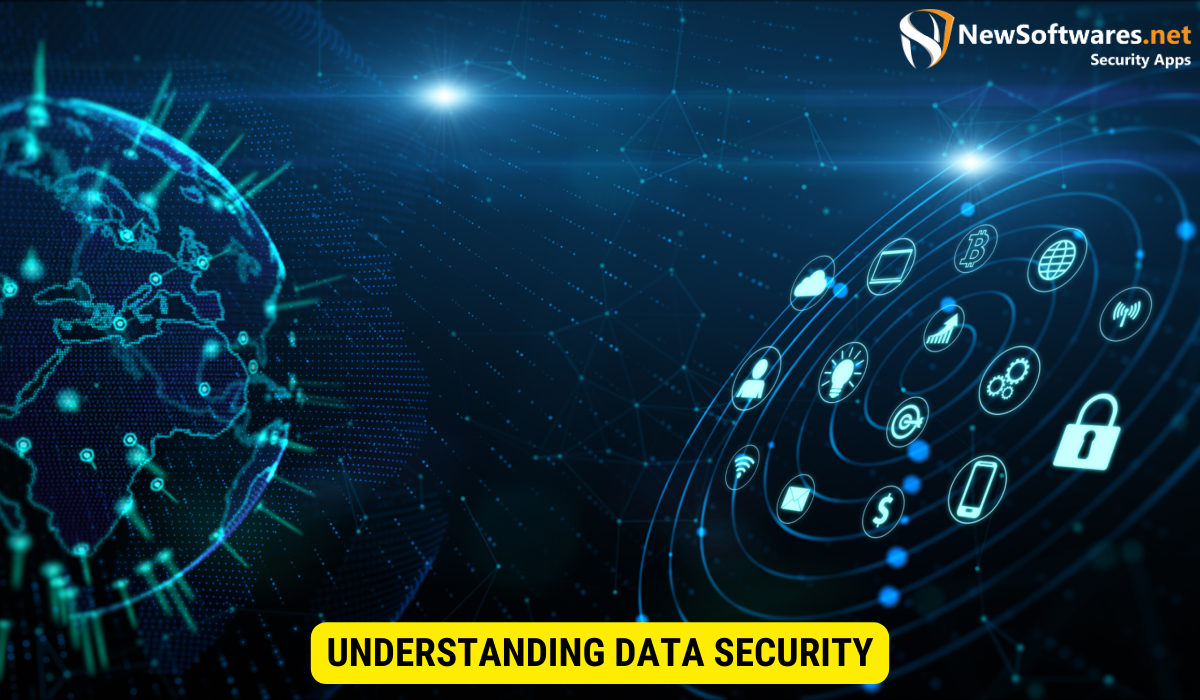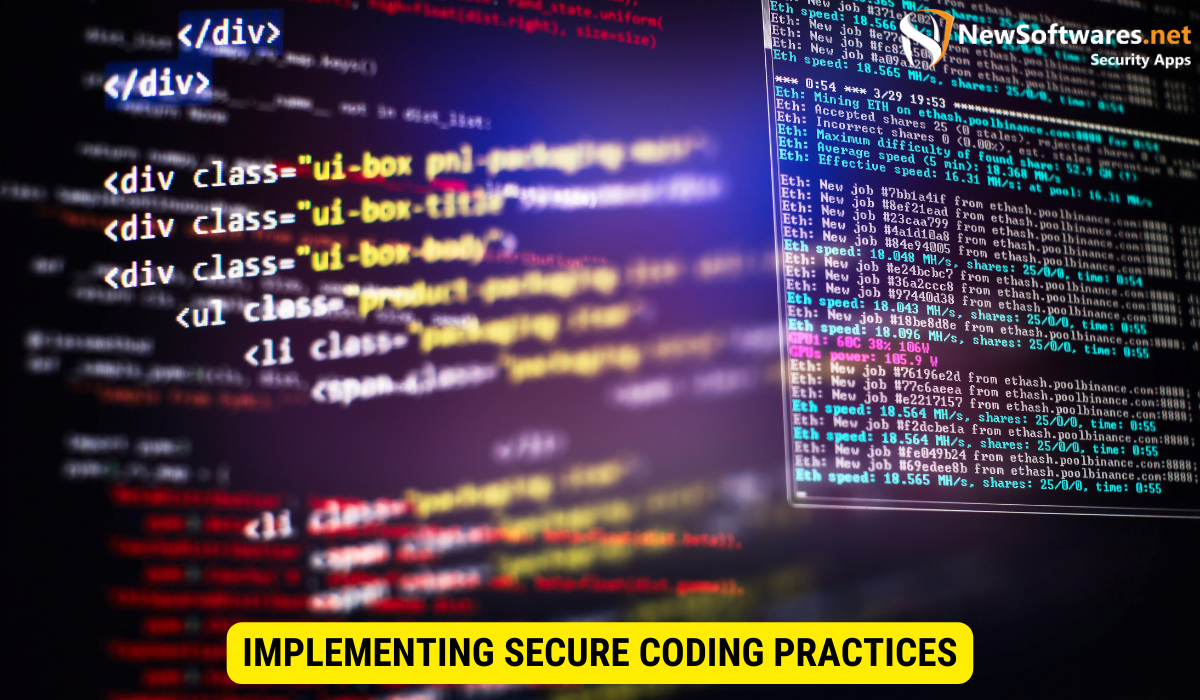Data security in programming involves safeguarding sensitive information from unauthorized access and threats. It includes concepts like encryption, authentication, access control, and secure coding practices.
In digital age, data security is of utmost importance. With the increasing reliance on technology and the exponential growth of data, programmers play a vital role in safeguarding sensitive information from illegal access, theft, and other data threats. Understanding data security is vital for programmers as it helps them develop robust and secure systems that protect valuable data.
Understanding Data Security

Data security refers to the safety of data against unauthorized access or modification. It involve implementing various measures and techniques to ensure data confidentiality, integrity, and availability. For programmers, data security is a fundamental aspect of their work, as they are responsible for creating and maintaining systems that handle sensitive information.
Regarding data security, programmers play a crucial role in safeguarding valuable information. They are tasked with developing robust systems that can withstand potential threats and ensure that data remains secure. This involves implementing encryption algorithms, authentication protocols, and access control mechanisms to guard sensitive data from unauthorized access.
The Importance of Data Security in Programming
Data security is crucial in programming because it helps prevent unauthorized access to important data. It ensures that information is only accessible to authorized individuals or entities and protects against data breaches, cyber attacks, and other malicious activities. Adequate data security measures instill trust in users and clients, who know their information is protected and handled carefully.
One of the key reasons why data security is of utmost importance in programming is the potential impact of a data breach. In today’s digital age, data breaches can have severe financial and reputation consequences. They can result in significant financial losses, legal liabilities, and damage to a company’s brand image. By prioritizing data security, programmers can help mitigate the risks and protect the interests of their clients and users.
Basic Concepts of Data Security
Before delving into the various threats and programming languages involved in data security, it is important to understand some basic concepts. Encryption, for example, is a widely used method to secure data. It involves encoding information so only authorized parties can access and understand it. Encryption algorithms, for instance AES (Advanced Encryption Standard) and RSA (Rivest-Shamir-Adleman), are commonly employed to protect sensitive data.
Authentication is another key concept in data security. It verifies the identity of users and prevents unauthorized access. This can be achieved through various mechanisms, such as passwords, biometric authentication, or two-factor authentication (2FA). By implementing strong authentication protocols, programmers can ensure that only authorized individuals can access sensitive data and systems.
In addition to encryption and authentication, entrance control is a crucial aspect of data security. Access control mechanisms make sure only authorized users can perform specific actions or access certain data. This can be achieved through role based access control (RBAC), where users are assigned specific roles and permissions based on their responsibilities within an organization. By implementing robust access control measures, programmers can prevent unauthorized users from tampering with or accessing sensitive data.
Understanding these basic concepts of data security is essential for programmers to build secure systems. By incorporating encryption, authentication, and access control mechanisms into their programming practices, they can help protect valuable data from potential threats and ensure information confidentiality, integrity, and availability.
Different Types of Data Threats
Programmers need to be aware of several types of data threats to effectively secure data. By understanding these threats, programmers can implement robust security measures to protect sensitive information. Two common threats that programmers should be knowledgeable about are cyber attacks and insider threats.
Cyber Attacks and Data Breaches
Cyber attacks involve unauthorized attempts to access, disrupt, or damage computer systems or networks. These attacks can be in variety of forms, such as malware infections, phishing attempts, or denial of service attacks. Cybercriminals always evolve their tactics, making it crucial for programmers to stay updated on the latest attack vectors and vulnerabilities.
Data breaches occur while sensitive information is accessed, stolen, or exposed without authorization. This can have rigorous consequences for individuals and organization, including financial loss, reputational damage, and legal ramifications. Programmers must prioritize data protection by implementing strong encryption, access controls, and intrusion detection systems.
One example of a cyber attack is ransomware, where hackers encrypt an organization’s data and demand a payment in exchange for the decryption key. These attacks can cripple businesses and cause significant financial losses. Programmers must proactively implement security measures to prevent such attacks, including regular data backups and employee training on recognizing phishing attempts.
Insider Threats to Data
While external threats are well-known, programmers must also consider the risks posed by insiders. Insider threats occur when individuals with authorized access to sensitive data misuse or abuse that access. This can be intentional, such as employees stealing confidential information for personal gain or to sell it to competitors. It can also be unintentional, such as accidentally sharing sensitive data through email or cloud storage.
Programmers must implement strict access controls and monitoring mechanisms to detect and prevent insider threats. This includes implementing role-based access controls, where employees only have access to the data necessary for their job responsibilities. Regular audits and reviews of user access privileges can help identify suspicious activities or unauthorized access attempts.
Additionally, programmers should educate employees about the significance of data security and the probable consequences of insider threats. This can be done through training program, workshops, and regular reminders about best practices for handling sensitive information.
It is important noting that not all insider threats are malicious. Sometimes, employees may unknowingly put data at risk due to negligence or lack of awareness. For example, an employee might leave their computer unlocked and unattended, allowing unauthorized access. Programmers should work closely with human resources and management teams to create a culture of security awareness and promote responsible data handling practices.
In conclusion, data threats are a constant concern for programmers. By understanding the different types of threats, such as cyber attacks and insider threats, programmers can take proactive steps to protect sensitive data. This includes implementing robust security measures, educating employees, and staying efficient on the latest security trends and vulnerabilities.
Programming Languages and Data Security
Programming languages play a vital role to ensure data security. Different programming languages have varying levels of built-in security measures and libraries that facilitate secure coding practices.
Role of Programming Languages in Data Security
Programming languages provide programmers with tools and techniques to write secure code and implement data security measures. Some languages have features that inherently enhance security, such as type-safe memory management, strong typing, and exception handling. By choosing a language with robust security features, programmers can significantly reduce the likelihood of vulnerabilities and exploits.
Most Secure Programming Languages
While no programming language is entirely secure, certain languages are known for their strong security characteristics. Languages such as Java, C#, and Python offer built-in security frameworks, libraries, and tools that make it easier to implement secure coding practices. These languages also have extensive communities and resources dedicated to security, allowing programmers to stay informed and updated on the latest security practices.
Techniques for Data Encryption
Data encryption is a basic aspect of data security. It involves transforming data into an illegible format without a decryption key. Encryption is broadly used to protect sensitive information, for instance passwords, financial data, and personal information.
Understanding Data Encryption
Data encryption involves using cryptographic algorithms to transform data into an unreadable format. The data can only be decrypted with the appropriate key. Data Encryption are of two major types: symmetric encryption and asymmetric encryption. Symmetric encryption uses a particular key for encryption and decryption. While asymmetric encryption uses a couple of keys. A public key for encryption & a private key for decryption.
Popular Data Encryption Algorithms
There are various encryption algorithms available, each with its strengths and weaknesses. Some popular encryption algorithms include Advanced Encryption Standard (AES), RSA, and Blowfish. These algorithms offer different levels of security which are used in different contexts depending on the requirements and desired level of encryption.
Implementing Secure Coding Practices

To ensure data security, programmers must adhere to make safe coding practices throughout the software development lifecycle. Secure coding involves following established principles and standards to minimize vulnerabilities and the risk of data breaches.
Principles of Secure Coding
Secure coding principles include practices such as input validation, output encoding, and parameterized queries to prevent ordinary vulnerabilities like SQL injection and cross-site scripting. Additionally, programmers should ensure secure handling of user authentication and authorization, proper error handling, and secure logging and auditing.
Secure Coding Standards
Various organizations and communities have developed secure coding standards and guidelines for programmers. Examples include the Open Web Application Security Project (OWASP) Secure Coding Practices and the CERT Secure Coding Standards. These standards outline best practices and provide developers with specific recommendations and techniques to improve the security of their code.
Key Takeaways
- Data security is vital in programming to protect sensitive information from unofficial access and other threats.
- Understanding basic concepts such as encryption, authentication, and access control is crucial for programmers.
- Cyber attacks and insider threats pose significant risks to data security and integrity.
- Programming languages are critical in ensuring data security by providing secure coding frameworks and libraries.
- Data encryption is fundamental for protecting sensitive information, and various encryption algorithms are available.
FAQs:
Why is data security important in programming?
Data security is vital in programming to protect sensitive information from unauthorized access, data breaches, and other threats, ensuring data integrity and user trust.
What are the common types of data threats programmers should be aware of?
Programmers should be aware of cyber attacks, including malware and phishing, as well as insider threats from individuals with authorized access to data.
Which programming languages are known for their strong security features?
Languages like Java, C#, and Python offer strong security features, built-in security frameworks, and supportive communities for secure coding practices.
What are key techniques for data encryption?
Data encryption involves using cryptographic algorithms to transform data into an unreadable format. Techniques include symmetric and asymmetric encryption using algorithms like AES and RSA.
What are some best practices for secure coding in programming?
Secure coding practices include input validation, output encoding, parameterized queries, and following secure coding standards like OWASP and CERT to prevent vulnerabilities.
Conclusion
Data security is a critical aspect of programming, especially when information is increasingly digital and vulnerable to various threats. Programmers must be well-versed in data security concepts, understand different threats, and implement secure coding practices. By doing so, they can protect valuable data, gain the trust of users and clients, and contribute to a safer online environment.
